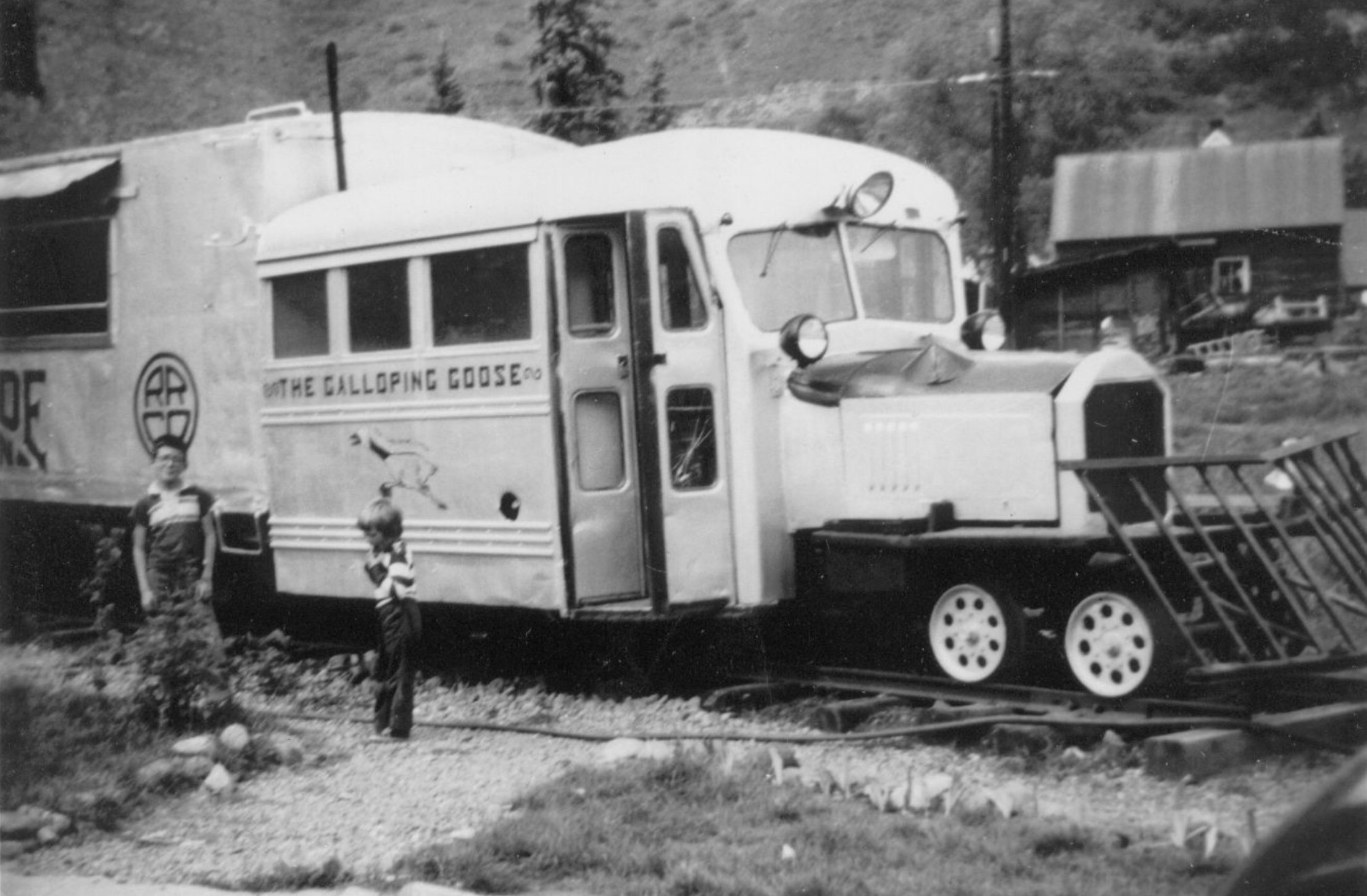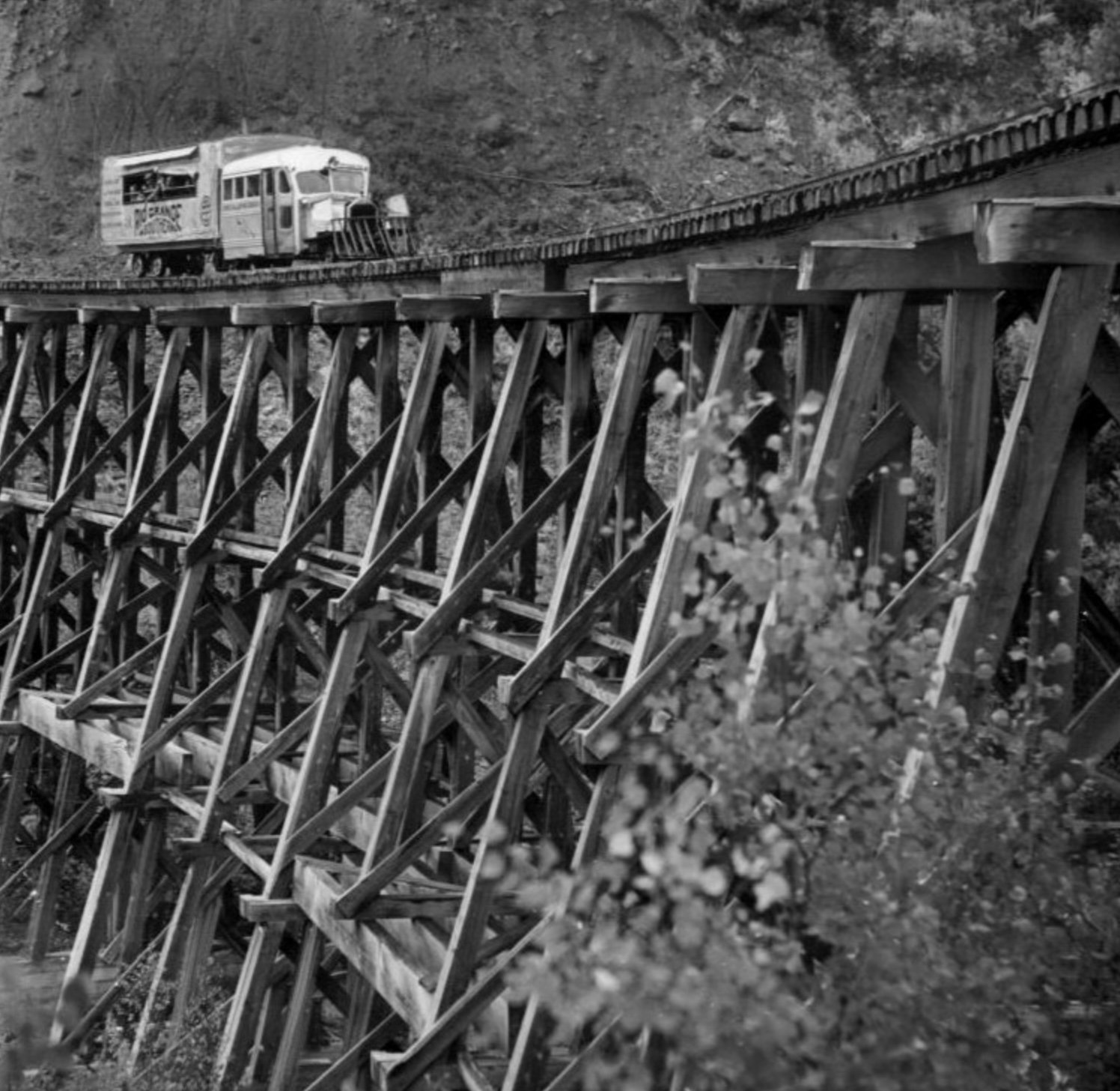Blue View - What’s a Galloping Goose?
/When we were at the railway museum in Kalispell, Montana, I came upon this quote by a local historian, a man named Don Green: “In later years, about 1930, the Galloping Goose replaced the Little Dinky. It made trips over the trail to Kila and Marion. This engine was like putting a motor in a baggage car and coupling it to the front wheels to give it power to pull it on trails.” This sounded interesting and worth learning more about. Unfortunately, the young lady who was acting as the docent had no information on either the Little Dinky or the Galloping Goose, and I’m sure Don, who was born in 1911, is no longer around to answer questions. When I later did my own research, I found very few references to the Little Dinky (at least not in this context… I did find some other, rather amusing references to Little Dinkys which were totally unrelated to the Great Northern Railway). I did learn that it was a small steam engine that was able to pull one boxcar and a small passenger car. On the other hand, there were several references to the Galloping Goose.
The first reference I could find was related to the Rio Grand Southern Railway, a small railroad in southwestern Colorado. In 1913, the RGS modified a gasoline powered truck to run on their narrow gauge rails, and used it as a maintenance vehicle. They referred to it as “The Goose”.
The next reference I could find to the Galloping Goose was with the Great Northern Anacortes to Rockport route. Passenger traffic began dropping in the early twentieth century and the route was becoming less profitable using steam engines. Some bright employee realized that one of the newer gas powered road vehicles could be modified to run on their rails and would be far less expensive to operate than the current steam engines. In addition, if done correctly, the vehicle would be powerful enough to carry a few passengers and a limited amount of freight. The first such rail car had its inaugural run in 1913 and looked like a truck with the bed replaced with an old school bus body. It was also called “The Goose”.
Meanwhile, the RGS in Colorado was struggling to stay solvent. As well as providing passenger and cargo services, it had contracts to deliver mail to several small towns in the area. The gold and silver mining boom days were long over and it was costing more to run their steam engines over many of their routes than they made from the dwindling passenger and freight revenues. They couldn’t drop the routes, however, because of their mail delivery contracts. They solved the problem by using gas vehicles. Whether the idea came from their earlier maintenance vehicle or from the Great Northern’s Anacortes rail car is unknown but they built seven of their own goose(s) (geese?) in their Ridgeway shop beginning in 1931. The first two used six cylinder Buick sedans, while most of the later ones used Pierce Arrow bodies and drivetrains. One had a flat bed attached and was used for maintenance; the rest had small boxcars attached and, like the Anacortes goose, could haul a few passengers and/or freight. All were rather odd looking conveyances, but they did what they were intended to do. Within weeks, those small routes became profitable and continued operation until 1950.
Somewhere along the way, both the Great Northern and the RGS versions renamed them the “Galloping Goose”. All seven of the RGS geese still exist, and have been restored. (Technically, #1 is actually a replica since the original #1 was dismantled). One is used at Knott’s Berry Farm while the other six are either used on the scenic, narrow gauge railroads in southwestern Colorado or on exhibit at the Colorado Railroad Museum.
The Great Northern Galloping Goose evolved into the “motorized baggage car” that Mr. Green described above, and they were used on other smaller routes… like the Montana route from Kalispell to Marion that he talked about, as well as many other routes throughout the northern states as well as into Canada. To my knowledge, none of the original Great Northern Galloping Geese still exist.
So why were they called a Galloping Goose? The theory that sounds most likely to me is that the Buicks and Pierce Arrows of the time had horns that sounded much more like a goose honk than the steam engine whistles they replaced. Plus, those old rail lines, especially the narrow gauge railroads, swayed back and forth so much, it was, perhaps, like riding a galloping goose… if a goose galloped and you could ride one.
See you next week…





